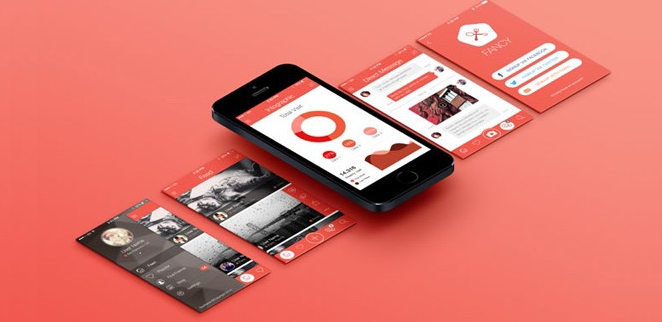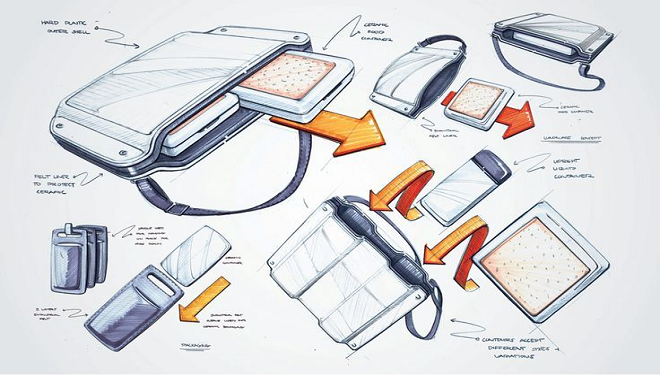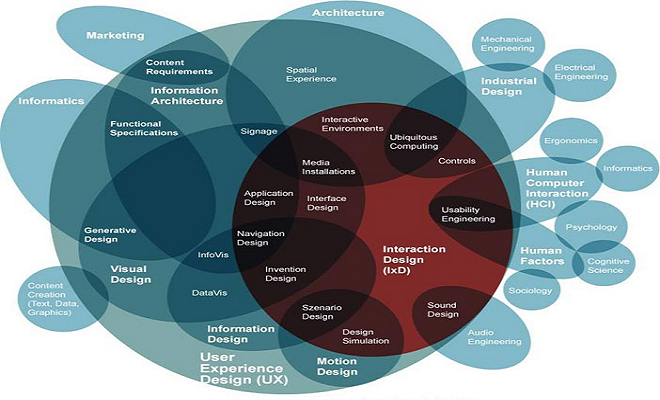While working on my laptop last evening, I suddenly felt the urge to have a Pizza. I commanded my Google Home, “OK Google, order Domino’s.” The Google assistant connected me to Domino’s voice ordering assistant, Dom which asked me a few questions regarding my order, and that’s it. Without interrupting the work I was doing, I ordered my pizza.

Sounds unreal, right? If an ancestor time travel to present time, it might be nothing less than magic for him. However, such things are common to experience these days – all thanks to the innovative technologies like Voice-search, AR/VR, Blockchain and IoT. These technologies have set the foundation of a new era where we can travel without stepping out of our room, transfer money without standing in endless queues in banks, book a cab in real-time, and perform almost anything on our mobile devices without involving any physical touch.
But, the most impressive is this one – ordering pizza by a voice command. Known as Multimodal UI design, this technology has facilitated the user’s lives with the option to interact with an app via different means. To give you more clarity on the concept, today we will discuss this technology only.
So, let’s begin with what is multimodal UI design.
Multimodal UI Design

As you might have guessed from the name, the Multimodal user interface design refers to the technique of designing a mobile application that allows users to perform different types interactions in multiple ways. The interaction can be text, in-app call, voice, gesture, or any other movement that can be recorded from different connected platforms and interpreted to serve users with desirable services. And the platforms comprises of the mobile application itself, the website linked, the chatbot in the Facebook Messenger, Digital Assistant like Siri and Alexa, and so on. Not only this, you can perform various other actions like checking the product availability and review, and tracking your order.
According to Christine W. Park, the author of the book ‘Designing Across Senses: A Multimodal Approach to Product Design’, Multimodal is a kind of design that employs human factors to interact with technology the same way we communicate with humans. It involves two or more user input modes such that the desired output is delivered; providing an enhanced, real-like experience to the end user base.
Benefits of Multimodal Approach in Product Design

The Multimodal user interface has a myriad of advantages to both the mobile app developers and users, some of which are:
• As Siri and other digital assistants will perform all the tasks using the speech recognition system, the users will enjoy faster and comfortable services. They will be able to perform multiple tasks at a time using voice-search and other revolutionary technologies.
• More conversion will be possible as the user need not install an app on their mobile device; they can directly connect with their favorite brand by social media platforms.
• The users need not scroll down the complete app screen or put efforts for customization. By using Google assistant and other such interaction mediums, they can directly land on the page of the thing they want.
• The design approach renders end users with an opportunity to select the most natural interaction pattern based on the actual task to be done. This gives them a feel of having sole control over their interaction with the device and makes their experience with the app reliable and effective.
The multimodal user interface approach, with advantages like mentioned above, is gaining huge momentum in the mobile industry -especially now when the technology pundits have predicted voice-search to be the foremost mode of communication. Developers and brands are embracing this technology to let the user decide what mode of interaction he wants. However, developing such an app is not easy.
Factors to Consider for Investing in Multimodal UI Design approach

From years of experience in the mobile industry, I have come to the conclusion that the multimodal UI design approach depends highly on various factors, which are as follows:
• User: Is the user using the app/device still, walking, running, driving, or performing some other kind of movement that could make the screen inaccessible to him? For example, A Fitness app has to be accepting voice as well as text kind of interactions so that user can perform his workout without any interruption.
• Environment: Is the user employing the application in a private environment or in public? Will it be a one-to-one interaction between the end user and device, or in a group of people? This will help you to understand the kind of interactions possible between the end user and device (voice, text, touch, or gesture)
• Proximity: Again, how close a user is to the device communicating with your mobile app also makes a difference. Will the user be able to quickly tap on the device for an interaction or not?
• Audio Capability: Does the device has a small mic? Will the device be able to capture a sound from a few feets away places – like within a room or outside? If so, will it be effective in dealing with an array of sounds? How will it filter them out? The mobile app should be designed keeping the audio capability of the devices into consideration.
• Visual capability: Do you have a fully economically compatible 4d keyword with you – something like a laptop or a phone or even more primitive device like a d-pad on it? You need to consider what kind of visual facility your end user has to access the multimodal functionality. For instance, there’s no need to let the users give visual commands to an audio-only device like Google assistant.
The Multimodal approach is gaining major attention in the market as it is embracing the user-centric services approach. So, if you are into a business and wish to take your business to newer height by designing your own app using this approach, contact the right mobile app development company today itself.

